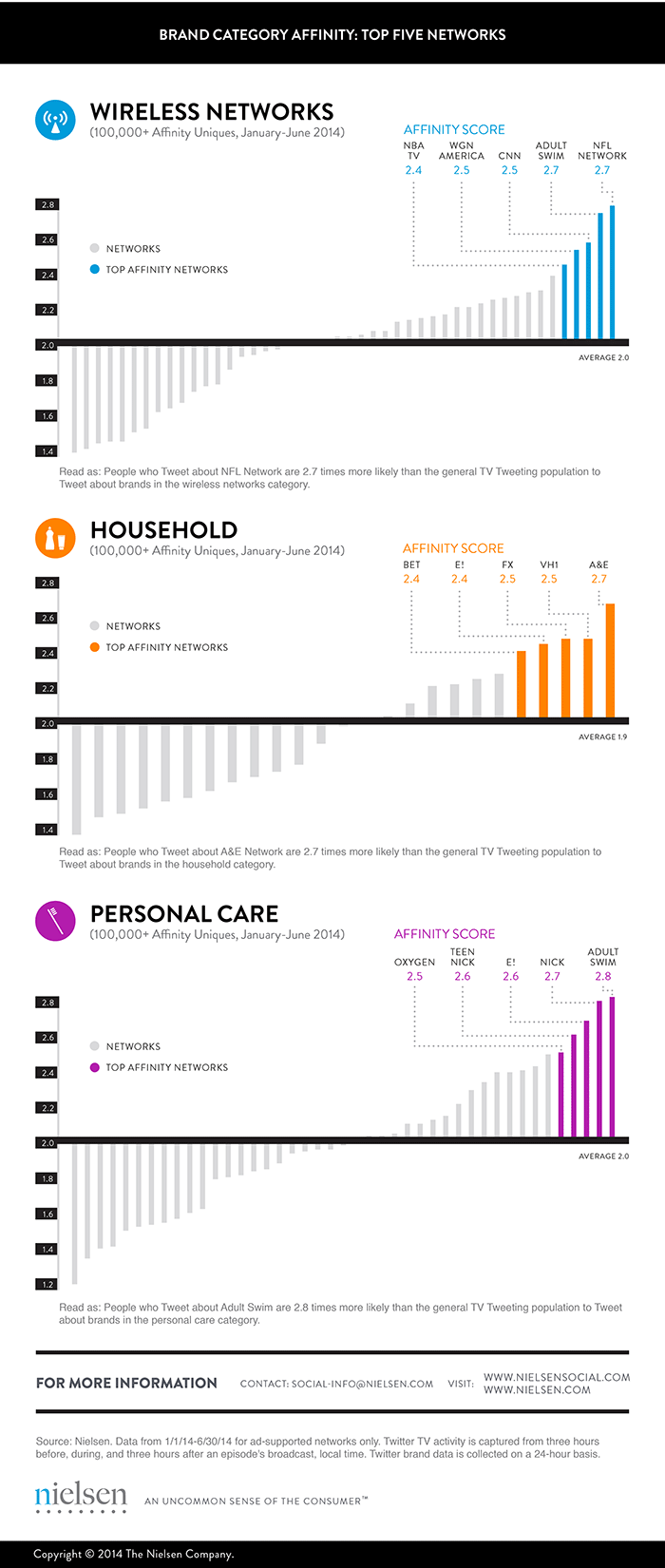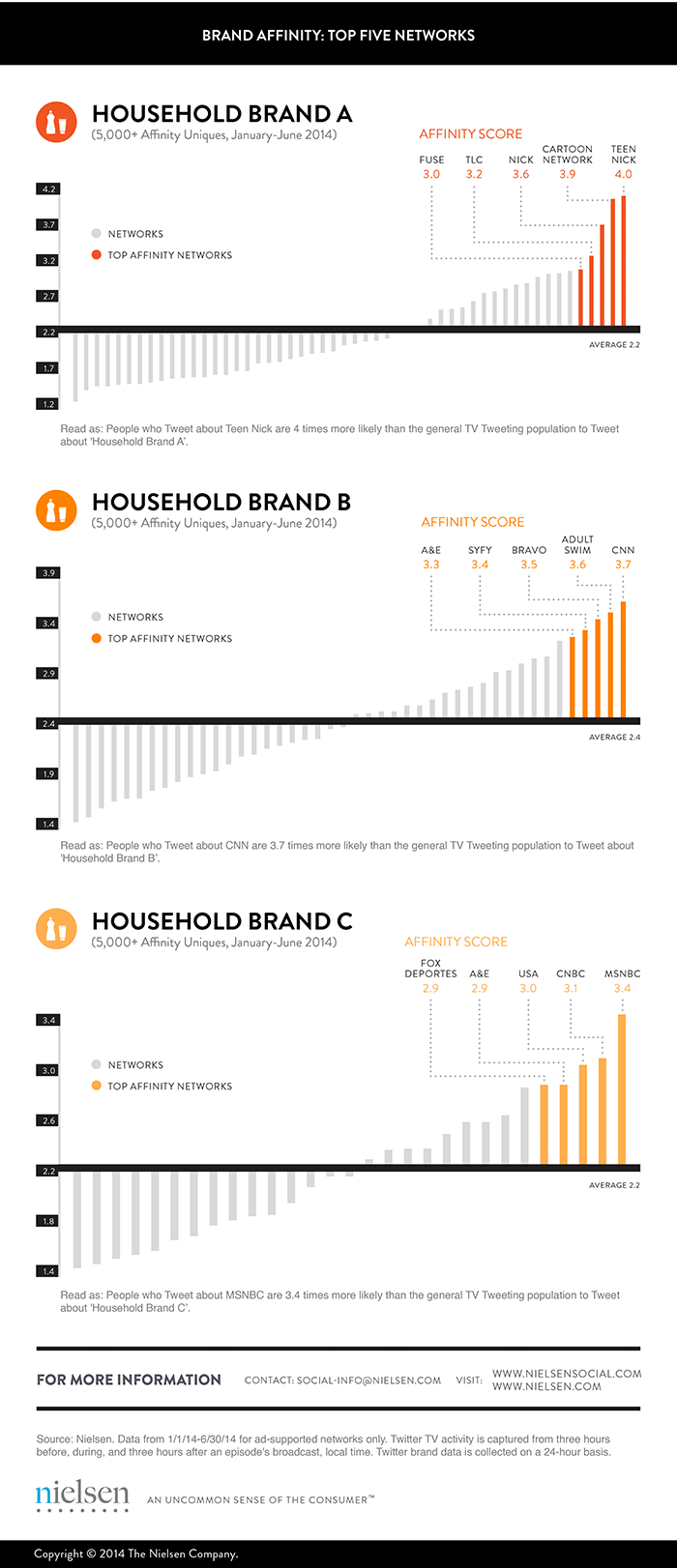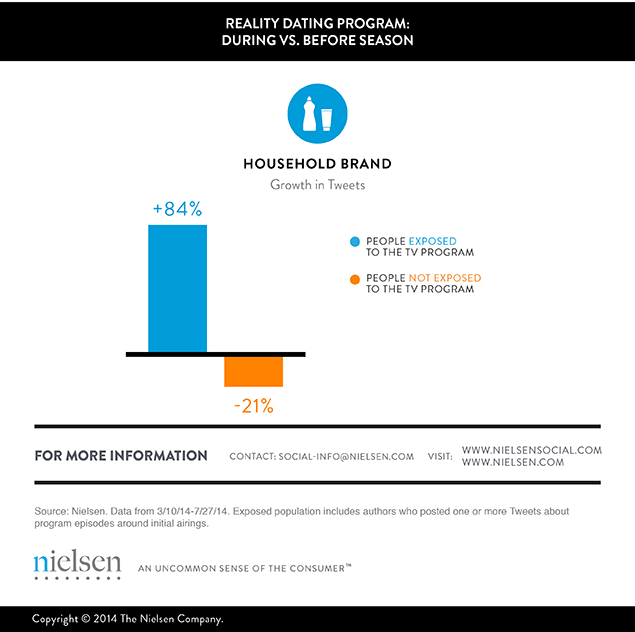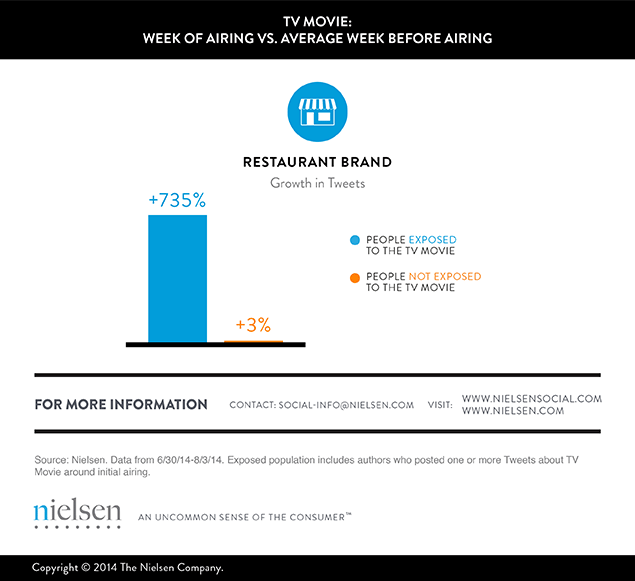Social media has transformed television viewing into a stadium experience, even for people watching alone at home. According to the 2014 Nielsen Digital Consumer Report, 84% of U.S. smartphone and tablet owners today watch television with a second screen in hand. And the devices are fostering a surge of real-time social media conversation between friends, fans and talent as programs unfold. With more and more Americans warming up to the social TV norm, viewers have become valuable social ambassadors for programmers and advertisers alike as they amplify content and messaging through their social spheres.
Planning to Maximize Earned Media Impact
For marketers, the goal may be maximizing earned media impact around their campaigns. And with that goal in mind, there are several factors they may consider as they identify and evaluate possible TV placements. But they’re not just considerations for marketers. These same factors can also support the networks working with those advertisers as they build ad sales strategies that will maximize earned media around placements and integrations.
First, advertisers and network ad sales teams can look at program characteristics to identify programs that regularly generate social media conversations around airtime—think reality competition programs, celebrity-filled award shows, and plot twisting dramas. In addition, they can look at TV audiences to understand size and demographics. Advertisers, agencies and networks can also leverage Nielsen Twitter TV Ratings to understand how social conversation about a program complements television reach across audiences and desired demos. Finally, they can look at affinity—a measure of the likelihood of a TV audience to Tweet about a specific brand or category—to find the TV audiences that have a natural tendency to embrace, engage with and share brand messages.
To better understand how TV audiences vary in the brand categories they tend to chat about, Nielsen Social analyzed the affinity between TV networks and three distinct brand categories. Looking at the networks with the highest affinity with each category, it’s apparent that different TV audiences have a tendency to Tweet about each category type. The wireless networks category, for example, demonstrated a high affinity with several networks that air sports programming, including NFL Network, WGN America and NBA TV. Personal care brands showed a high affinity with networks whose primary audiences are young adults, including Adult Swim, Nick and Teen Nick. Household brands showed an affinity with networks that regularly air reality programs, including A&E, VH1 and E!.

The analysis also uncovered differences within categories. Looking at three brands in the household category, the analysis found differences in the TV audiences that were most likely to Tweet about each. Advertisers can use this data to refine commercial placements, sponsorships and integrations to better connect and engage with consumers that want to hear from them.

Brand affinity can help advertisers looking to maximize earned media around TV placements reach their campaign goals, whereas social affinity can help networks inform program positioning as they build ad sales strategies for those advertisers.
How to Track Earned Media Impact of TV Integrations
Social TV data can also support marketers looking to track campaign effectiveness. Following a recent full season integration of one household brand in a reality dating show, Nielsen Social analyzed the effectiveness of the campaign by measuring the brand-related conversation among the population exposed to the TV program. Comparing the amount of brand-related Tweets sent during the 70-day period before the premiere of the program to the amount sent during the 70-day program season, the brand saw an 84% increase in brand-related Tweets from the audience exposed to program airings. Comparatively, the population that was not exposed to the program sent 21% fewer Tweets about the brand during the program season compared to than the period before the season began.

The brand’s real-time social TV integration with the program drove relevance for the brand among consumers by connecting with a TV audience that embraced the brand socially. The brand found the right intersection of a highly social audience (the finale episode of the program reached an audience of more than 4 million people on Twitter) and TV authors that embraced their brand (with an affinity score of 3.3 over a recent three-month period, program authors were 3.3 times more likely than general TV authors to Tweet about the brand). The brand also employed a real-time engagement strategy that credibly grabbed the attention of fans to naturally drive brand conversation across screens.
Brands looking to maximize earned media around a single integration with a TV event can also look to social TV to understand the effectiveness of their efforts. Social TV measurement can also support networks in reporting on the effectiveness of sponsorships and integrations to these advertisers. Taking a closer look at one restaurant brand’s integration with a TV movie, social TV data demonstrated just how effective the placement was for the brand in driving earned media. The amount of brand-related Tweets sent by the population exposed to the TV movie during the week of the airing was 735% greater than the average number of brand-related Tweets sent by that population in the prior weeks. That compared to just a 3% increase in brand-related Tweets from the population that was not exposed to the program.

